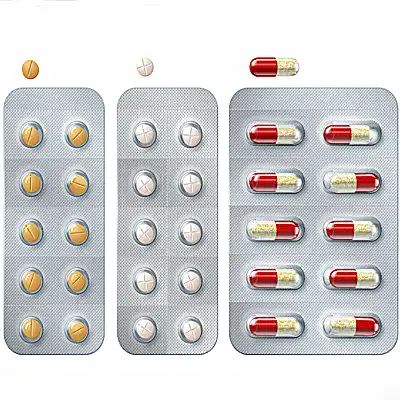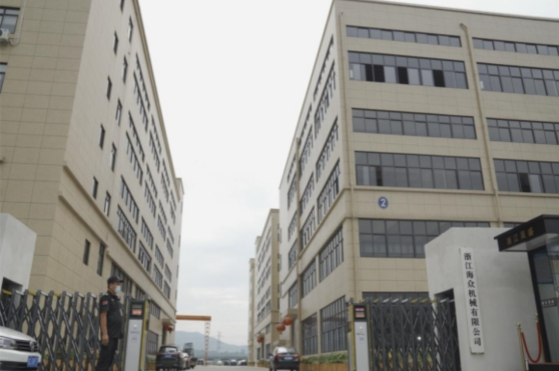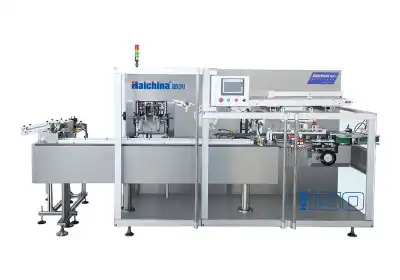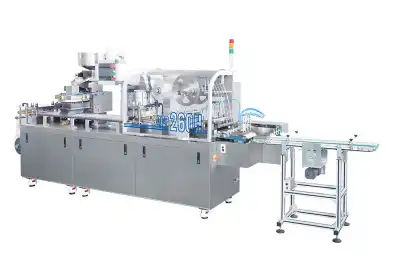The Differences Between Thermoforming and Cold Forming Blister Pack
Blister packaging is a versatile and widely used method in the pharmaceutical, cosmetics, and consumer goods industries. Two primary techniques dominate this field: thermoforming and cold forming. Each process offers unique advantages and is suited for different applications. Thermoforming involves heating plastic sheets to create pockets, while cold forming uses pressure to shape aluminum foil without heat. The choice between these methods depends on factors such as product sensitivity, barrier requirements, and cost considerations. Understanding the distinctions between thermoforming and cold forming is crucial for manufacturers to select the most appropriate blister packaging machinery, including blister machine packing, for their specific needs, ensuring optimal product protection and presentation.

Understanding Thermoforming Blister Packaging
The Thermoforming Process Explained
Thermoforming is a popular method in blister packaging that involves heating a thin sheet of plastic material, typically PVC or PET, until it becomes pliable. The softened plastic is then formed into a specific shape using a mold and vacuum or pressure. This process creates cavities or pockets in the plastic sheet, which are designed to hold the product securely.
The thermoforming process in blister packaging machinery consists of several steps:
- Feeding the plastic sheet into the machine
- Heating the sheet to its forming temperature
- Shaping the heated sheet using a mold
- Cooling the formed sheet to maintain its shape
- Trimming excess material
Thermoforming blister packaging equipment is versatile and can produce a wide range of shapes and sizes, making it suitable for various products.
Advantages of Thermoforming
Thermoforming offers several benefits in blister packaging:
- Visibility: Clear plastic materials allow for excellent product visibility, enhancing shelf appeal.
- Customization: The process allows for intricate designs and shapes to fit specific products.
- Cost-effectiveness: For large production runs, thermoforming can be more economical.
- Versatility: Suitable for a wide range of products, from pharmaceuticals to consumer goods.
- Speed: High-speed production capabilities for efficient packaging operations.
Limitations of Thermoforming
Despite its advantages, thermoforming has some limitations:
- Moisture sensitivity: Not ideal for highly moisture-sensitive products.
- Limited barrier properties: May not provide sufficient protection against oxygen and light for some products.
- Environmental concerns: Some thermoforming plastics are not easily recyclable.
Exploring Cold Forming Blister Packaging
The Cold Forming Process Demystified
Cold forming, also known as cold molding or pressure forming, is an alternative blister packaging technique that doesn't require heat. This process uses aluminum foil or a laminate with an aluminum layer to create the blister cavity. The material is shaped solely through pressure, without the application of heat.
The cold forming process in blister packaging machinery typically involves:
- Feeding the aluminum foil or laminate into the machine
- Applying pressure to form the cavity
- Filling the formed cavity with the product
- Sealing the blister with a lidding material
Cold forming blister packaging equipment is particularly suited for moisture-sensitive and oxygen-sensitive products.
Benefits of Cold Forming
Cold forming offers unique advantages in blister packaging:
- Superior barrier properties: Excellent protection against moisture, oxygen, and light.
- Suitability for sensitive products: Ideal for pharmaceuticals and other sensitive items.
- No heat exposure: Eliminates the risk of heat-related product degradation.
- Strength and durability: Aluminum-based blisters offer robust protection.
- Extended shelf life: Enhanced barrier properties contribute to longer product viability.
Drawbacks of Cold Forming
Cold forming also has some limitations:
- Limited visibility: The opaque nature of aluminum reduces product visibility.
- Higher material costs: Aluminum-based materials are generally more expensive than plastic sheets.
- Less design flexibility: Shapes and contours are more limited compared to thermoforming.
Choosing Between Thermoforming and Cold Forming
Product Considerations
The choice between thermoforming and cold forming largely depends on the product being packaged. Factors to consider include:
- Moisture sensitivity: Cold forming is preferable for highly moisture-sensitive products.
- Light sensitivity: Products requiring protection from light benefit from cold forming's opaque nature.
- Visual appeal: Thermoforming is ideal for products that rely on visual presentation.
- Shape complexity: Thermoforming offers more flexibility for intricate product shapes.
Understanding these product-specific needs is crucial when selecting the appropriate high speed blister packing machine blister packaging machinery.
Production and Cost Factors
When choosing between thermoforming and cold forming, consider the following production and cost aspects:
- Production volume: Thermoforming is often more cost-effective for high-volume production.
- Equipment investment: Thermoforming machinery may have a lower initial cost.
- Material costs: Cold forming materials are typically more expensive than thermoforming plastics.
- Energy consumption: Thermoforming requires more energy due to the heating process.
Balancing these factors is essential for optimizing packaging operations and managing costs effectively.
Environmental and Regulatory Considerations
In today's eco-conscious market, environmental and regulatory factors play a significant role in packaging decisions:
- Recyclability: Some thermoformed plastics are more easily recyclable than cold-formed aluminum laminates.
- Material reduction: Thermoforming often allows for thinner packaging materials.
- Regulatory compliance: Both methods can meet pharmaceutical packaging regulations, but cold forming may be preferred for certain sensitive drugs.
- Carbon footprint: Consider the overall environmental impact of production and disposal for both methods.
Manufacturers must weigh these environmental and regulatory aspects when selecting blister packaging equipment and processes.
Conclusion
The choice between thermoforming and cold forming in blister packaging is not a one-size-fits-all decision. Each method offers distinct advantages and is suited to different product types and production requirements. Thermoforming excels in visual appeal, design flexibility, and cost-effectiveness for high-volume production, making it ideal for consumer goods and less sensitive pharmaceuticals. Cold forming, with its superior barrier properties, is the go-to choice for moisture-sensitive and oxygen-sensitive products, particularly in the pharmaceutical industry. By carefully considering product needs, production factors, and environmental implications, manufacturers can make informed decisions about their blister packaging machinery and processes, ensuring optimal product protection and market success.
Contact Us
For more information on selecting the right blister packaging equipment for your specific needs, contact Zhejiang Haizhong Machinery Co., Ltd. at [email protected]. Our team of experts is ready to assist you in finding the perfect packaging solution for your products.
References
Johnson, A. (2021). Advances in Pharmaceutical Packaging: Thermoforming vs Cold Forming. Journal of Packaging Technology and Research, 15(3), 78-92.
Smith, B., & Brown, C. (2020). Blister Pack Manufacturing: A Comprehensive Guide. Industrial Packaging Press.
Chen, L., et al. (2019). Comparative Analysis of Barrier Properties in Thermoformed and Cold-Formed Blister Packaging. Packaging Science and Technology, 32(4), 215-230.
Williams, R. (2022). Sustainability in Pharmaceutical Packaging: Evaluating Blister Pack Options. Green Packaging Innovations, 8(2), 45-58.
Garcia, M., & Lopez, F. (2020). Cost-Benefit Analysis of Blister Packaging Methods in the Consumer Goods Industry. Journal of Industrial Economics, 28(1), 102-118.
Patel, S. (2021). Regulatory Compliance and Quality Assurance in Blister Pack Manufacturing. Pharmaceutical Engineering Review, 19(3), 301-315.

Submit the form now to get a unique quote!

ZHEJIANG HAIZHONG MACHINERY CO., LTD.
Popular Blogs
-
 Successful caseProducts and services
Successful caseProducts and servicesHow to Train Employees to Operate a Bottle Packing Machine Effectively?
-
 Successful caseIndustry insights
Successful caseIndustry insightsThe Blister Packaging Process: A Complete Step-by-Step Guide
-
 Successful caseComparative analysisIndustry insights
Successful caseComparative analysisIndustry insightsWhat Type of PVC Is Best for Blister Packing Machines?